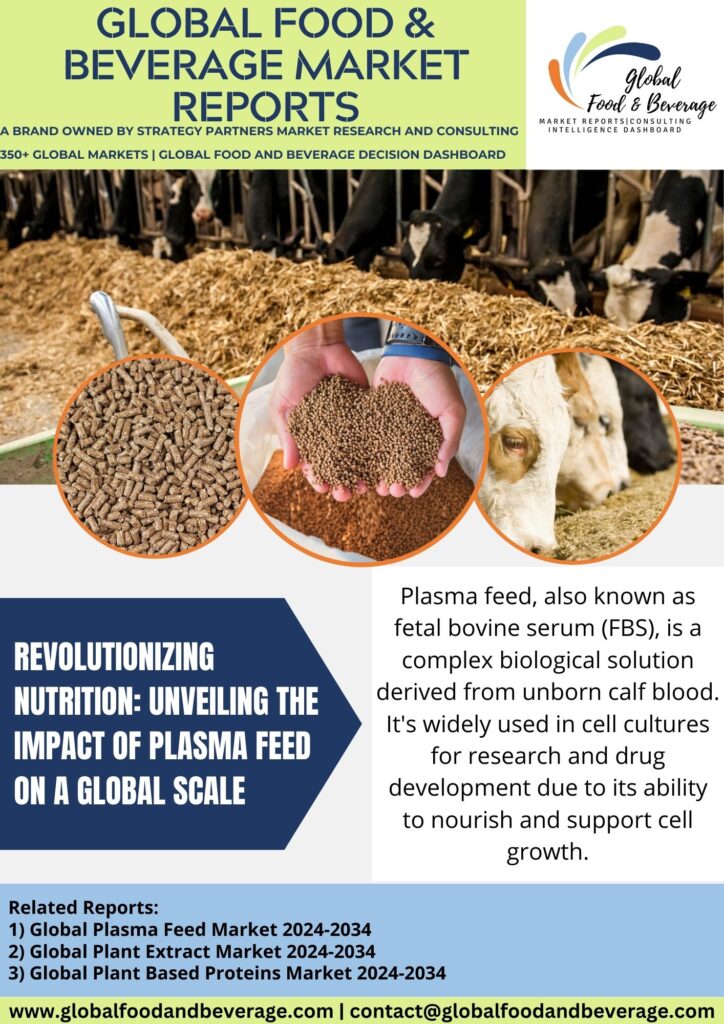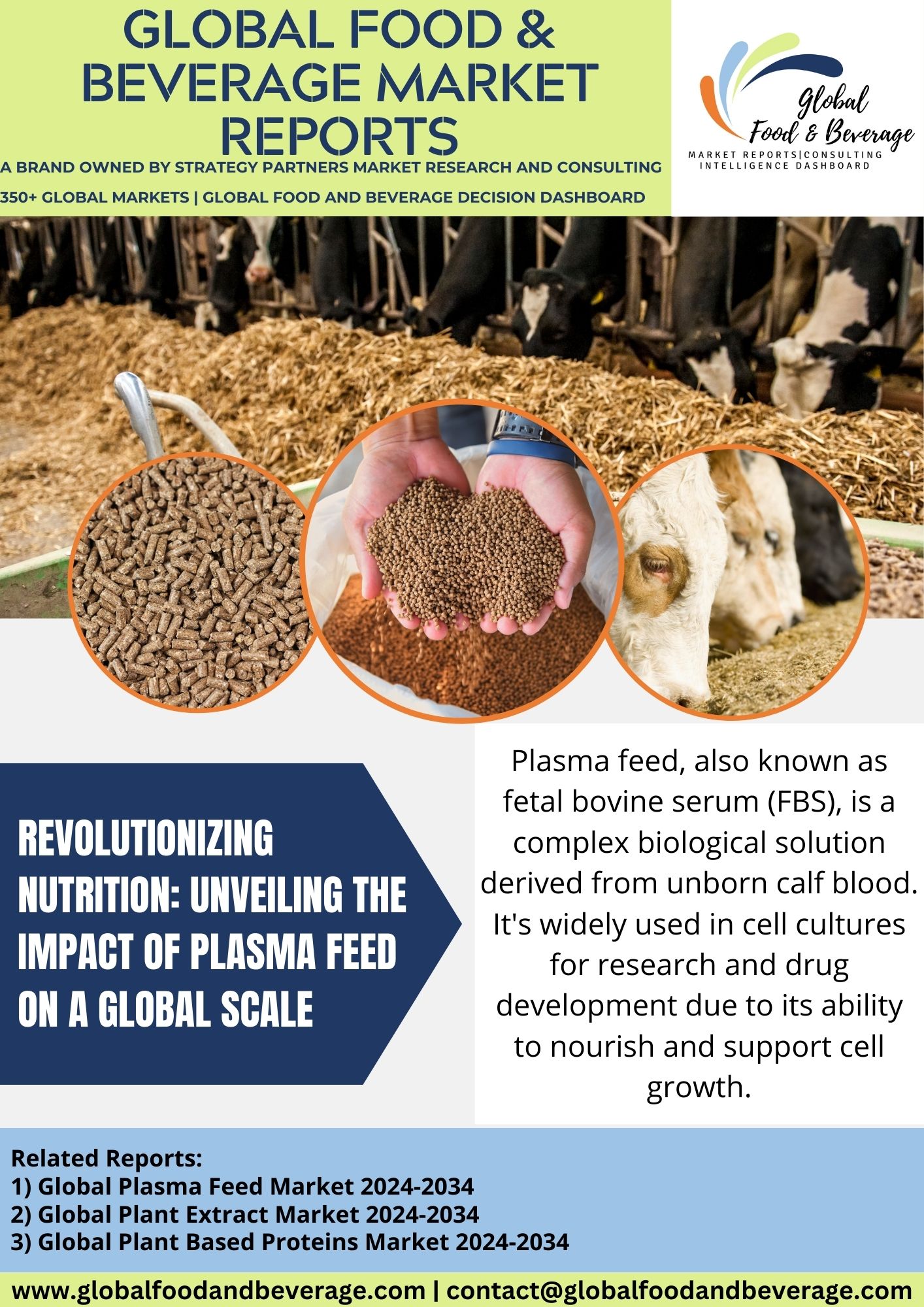Revolutionizing nutrition: unveiling the impact of plasma feed on a global scale
Plasma Feed Global is a pioneering venture at the forefront of the biotechnology landscape, revolutionizing the field of sustainable nutrition. Established with a mission to address global challenges in food security and environmental sustainability, the company has developed a cutting-edge technology that leverages plasma to create a novel and highly nutritious feed for livestock and aquaculture.

Plasma Feed Global’s proprietary technology involves the controlled manipulation of plasma, the fourth state of matter, to produce a nutrient-rich feed that surpasses traditional alternatives in both quality and sustainability. This breakthrough addresses concerns associated with conventional feed production, such as land use, water consumption, and the environmental impact of traditional farming practices.
The company’s commitment to global food security is underscored by the scalability and adaptability of its technology. Plasma Feed Global aims to provide a viable solution for the increasing demand for animal protein while mitigating the ecological footprint associated with traditional feed production. By optimizing nutrient content and minimizing resource use, the company contributes to a more efficient and environmentally friendly food production system.
The benefits of Plasma Feed Global’s innovation extend beyond its ecological impact. The resulting feed enhances the health and productivity of livestock and aquatic species, ultimately improving the quality of animal-derived products for human consumption. This not only addresses nutritional challenges but also promotes a more sustainable and ethical approach to animal farming.
As the global population continues to grow, the demand for protein sources escalates. Plasma Feed Global stands as a beacon of innovation, offering a transformative solution to the challenges posed by traditional feed production methods. With a commitment to sustainability, efficiency, and nutritional excellence, the company is poised to play a pivotal role in shaping the future of food production on a global scale.
ADVANCEMENT:
In the global context, significant advancements in plasma feed have revolutionized animal nutrition, particularly in the livestock and aquaculture industries. Plasma feed, derived from blood plasma, has become a crucial component in enhancing the health and performance of animals.
One notable advancement is the utilization of advanced processing technologies to extract and refine plasma proteins. These methods ensure the preservation of the proteins’ bioavailability and functionality, resulting in feed additives that efficiently support growth, immune function, and overall well-being in livestock and aquatic species.
Precision in the formulation of plasma feed has seen substantial progress, with a focus on tailoring nutritional profiles to meet specific needs at different stages of animal development. This level of customization contributes to optimized growth rates, improved feed efficiency, and enhanced disease resistance.
Furthermore, advancements in plasma feed have led to a more sustainable approach to animal nutrition. By efficiently utilizing blood plasma, a co-product of the meat processing industry, the production of plasma feed minimizes waste and contributes to the circular economy.
The global adoption of these advancements underscores the pivotal role of plasma feed in meeting the rising demand for high-quality animal protein. As a result, the industry continues to evolve, incorporating innovative technologies to ensure the efficient and sustainable utilization of plasma-derived feed additives.
CHALLENGE:
Plasma Feed Global, despite its groundbreaking approach to sustainable nutrition, faces several challenges in its mission to revolutionize the feed industry. One key obstacle lies in the widespread acceptance and adoption of its innovative technology. The agricultural sector is traditionally conservative, and convincing stakeholders to transition from conventional feed practices to a novel plasma-based alternative requires overcoming entrenched attitudes and skepticism.
Economic considerations also pose a challenge. The initial investment required for implementing Plasma Feed Global’s technology may be substantial, deterring some stakeholders from embracing the change. Additionally, ensuring that the new feed is competitively priced compared to traditional alternatives is crucial for widespread market adoption.
Regulatory hurdles represent another significant challenge. The introduction of a novel feed source necessitates compliance with stringent regulations and standards. Plasma Feed Global must navigate complex regulatory landscapes to gain approval for its product, requiring substantial time and resources.
Moreover, scalability is a critical concern. To make a meaningful impact on global food security, Plasma Feed Global must demonstrate the ability to scale production efficiently without compromising quality. This requires addressing logistical and operational challenges associated with large-scale manufacturing and distribution.
In overcoming these challenges, Plasma Feed Global will not only validate its revolutionary concept but also contribute significantly to a more sustainable and resilient future for the global food industry.
CONCLUSION:
In conclusion, the global adoption of plasma feed represents a significant breakthrough in livestock nutrition. With its potential to enhance animal health, boost growth rates, and improve feed efficiency, plasma feed has become a valuable component in modern livestock production. Its widespread acceptance underscores its positive impact on both economic and ecological aspects of the industry. As the demand for sustainable and high-performance animal nutrition solutions continues to grow, plasma feed is poised to play a pivotal role in meeting these challenges, ensuring a more efficient and responsible approach to global livestock farming.
